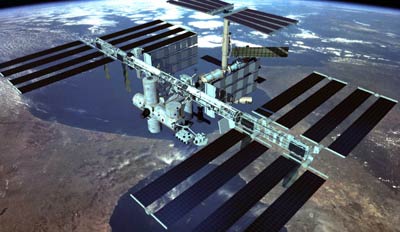NASA’s troubled futureby Donald A. Beattie
|
| In order to achieve the near-term goal of the President’s Vision, returning astronauts to the Moon by 2020, NASA has begun to mortgage its future. |
The most damaging result has been the treatment of the first “A” in NASA: Aeronautics. With a proud history of over ninety years of research and innovation that influenced the design and operation of essentially all aircraft now flying, NASA has been forced to retreat from its leadership role. NACA, and then NASA, pioneered research in propulsion, structures, materials, flight control systems, and more recently contributed in a critical arena, improving air traffic control. NASA centers at Langley, Lewis, Ames, and Edwards were the bedrock upon which NASA was founded. They have witnessed a steady deterioration in their ability to conduct cutting-edge research despite two, Glenn and Dryden, having new names. The unique industry-government partnership that evolved over the years that made our civil aviation sector the envy of the world has become an afterthought.
Does anyone remember that many senior agency managers from Langley, Lewis, and Ames became the core of Apollo managers at the Manned Spacecraft Center in Houston and other locations? Since the end of Apollo, finding and promoting experienced managers at NASA has been a concern. It is an easy transition to move experienced managers from aeronautics to astronautics provided they have been involved in major programs on which to learn the program management trade. But, when needed in the future, the pool of such highly trained managers will be very small because of reductions in aeronautics research, especially major flight projects.
Global climate change, a growing concern, is a research area in which NASA is a natural leader to develop the tools and expertise to better understand what is going on. NOAA and the USGS have depended on NASA to provide the technology they need to perform their missions to measure and predict the effects of the changes taking place. However, resources in this area have also been reduced. One of the results is that the Landsat program, currently providing degraded data from Landsats 5 and 7, will probably experience a period after 2010 when there will be no functioning satellites on orbit. In describing how bad the overall Earth science situation is, the Space Science Board of the National Academies released a report in 2005 containing the following damning statement: “At NASA, the viability of Earth science and applications programs has been placed at substantial risk by a rapidly shrinking budget that no longer supports already approved missions and programs of high scientific and societal relevance.” Over the next decade, the report recommended NASA fund 14 new Earth observation missions. Where will the funds be found to support this recommendation with NASA concentrating on returning to the Moon?
| It would appear that the only way to return some semblance of order and stability to NASA’s programs is for Congress to take the leadership role and balance NASA’s research portfolio. |
Another example is the change in emphasis for research to be conducted by the US on the International Space Station (ISS). NASA has decided to restrict experiments to those that will contribute to understanding the physiological effects of long-duration space flight. Originally, research envisioned on the ISS included a long list of experiments that would take full advantage of the unique microgravity environment. Experimenters from universities, industry, and government laboratories signed up to participate. Expensive facilities were built to be carried to orbit in order to perform the experiments. Now, in order to reach orbit, some will be dependent on whether or not others are interested in their use and willing to pay the freight. Under current plans the centrifuge will never make it to orbit because only the shuttle can deliver it and it isn’t on the manifest because of the reduction in shuttle flights. Only the international partners may be able to take advantage of the $100-billion investment and conduct productive experiments and engineering tests such as manufacturing new products. That assumes, of course, that there will be a means to increase the international crew on board the ISS to six or more, a capability that does not exist today. This is an inexcusable waste of the monies American taxpayers have invested in the ISS.
It would appear that the only way to return some semblance of order and stability to NASA’s programs is for Congress to take the leadership role and balance NASA’s research portfolio. But time is running out. Actions already taken at the centers and with contractors will soon become irreversible and NASA’s ability to maintain preeminence in traditional research areas will be lost. The decision to retire the shuttle in 2010 must be immediately reevaluated before the point of no return occurs. Perhaps NASA has already closed that door with the actions it has taken, but never say never. Shuttles are the only means to keep the ISS fully supplied and crewed until the Ares 1 and Orion become operational, a very uncertain date.
